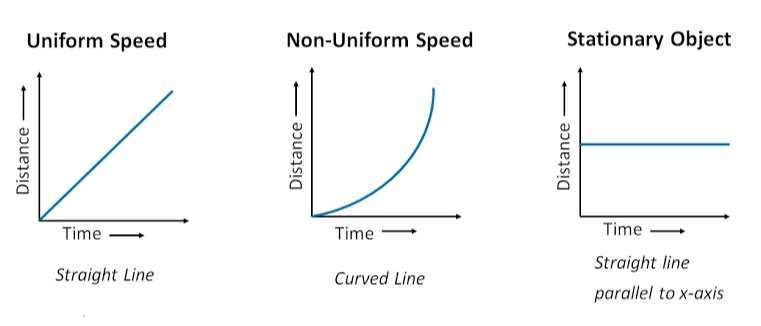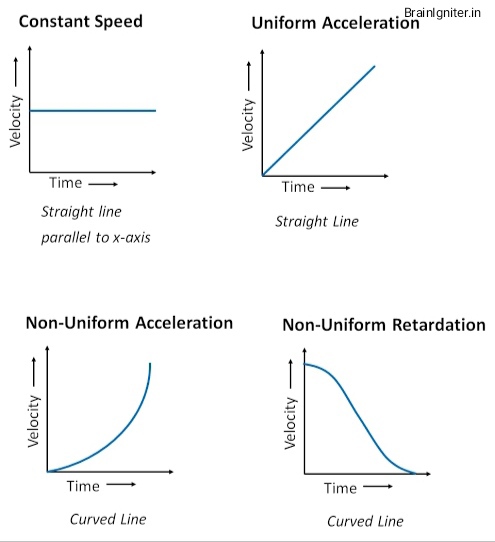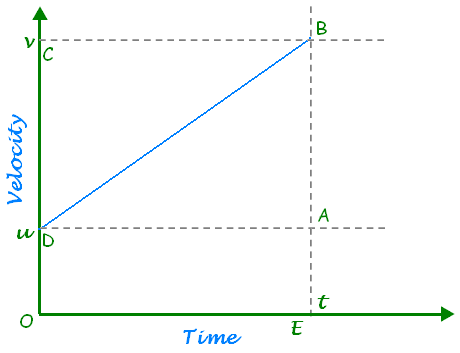Class 9 Motion Notes
Notes Important Questions NCERT Solutions MCQ Quiz – 1 MCQ Quiz – 2
Motion Notes
Motion:-
When a body changes its position with respect to time then the body is said to be in motion.
Rest:-
A body is said to be in rest if it does not change its position with respect to time.
Rectilinear Motion:-
Motion in a straight line is called rectilinear motion.
Scalar Quantity:-
The physical quantity which depends only on magnitude is called scalar quantity. Ex:- distance, mass, speed etc.
Vector Quantity:-
The physical quantity which depends on both magnitude and direction is called vector quantity. Ex:- displacement, velocity, weight, acceleration etc.
Distance:-
The length of the actual path covered by an object is called distance.
- S.I. unit:- meter (m)
- It is a scalar quantity.
Displacement:-
The shortest distance between initial and final point is called displacement.
- S.I. unit:- meter (m)
- It is a vector quantity.
Uniform Motion:-
The motion of an object is said to be uniform if it covers equal distances in equal intervals of time.
Non-uniform Motion:-
The motion of an object is said to be non-uniform if it does not cover equal distances in equal intervals of time.
Speed:-
The distance covered by an object per unit time is called speed.
- Speed = Distance/Time
- S.I. unit:- meter/second
- Quantity:- Scalar
- Average speed = Total distance covered/Total time taken
Velocity:-
The displacement of an object per unit time is called velocity.
- Velocity = Displacement/Time
- S.I. unit:- meter/second
- Quantity:- Vector
- Average velocity = (Initial velocity + Final velocity)/2 = (u + v)/2
Acceleration(a):-
The change in velocity of an object per unit time is known as acceleration.
- a = (v – u)/t
- S.I. unit:- meter/second2 Or, m/s2
- Quantity:- Vector
- Odometer measures the distance covered by vehicles.
- Speedometer measures the speed of the vehicles.
Distance – Time Graphs:-
.
- The slope of distance – time graph gives the speed of the object.
Velocity – Time Graphs:-

- The area under the velocity-time graph gives the distance (magnitude of displacement).
- The slope of velocity – time graph gives the acceleration of the object.
Equation For Velocity – Time Relation:-

Consider an object moving with initial velocity ‘u’ and acceleration ‘a’. Let after time ‘t’, its final velocity is ‘v’.
From graph, OD = u, OC = v and OE = t
acceleration = Change in velocity/Time
or, a = DC/OE
or, a = (OC – OD)/OE
or, a =(v – u)/t
or, at = v – u
or, v = u + at
Equation For Position – Time Relation:-

Consider an object moving with initial velocity ‘u’ and acceleration ‘a’. Let after time ‘t’, its final velocity is ‘v’.
From graph, OD = u, OC = BE = v and OE = t
Distance traveled = area of trapezium ODBE
or, S = 1/2(sum of parallel sides) x distance between them
or, S = 1/2(OD + BE) x OE
or, S = 1/2(u + v) x t
or, S = 1/2(u + u + at) x t [since, v = u + at]
or, S = 1/2(2u + at) x t
or, S = ut + (1/2)at2
Equation For Position – Velocity Relation:-

Consider an object moving with initial velocity ‘u’ and acceleration ‘a’. Let after time ‘t’, its final velocity is ‘v’.
From graph, OD = u, OC = BE = v and OE = t
Distance traveled = area of trapezium ODBE
or, S = 1/2(sum of parallel sides) x distance between them
or, S = 1/2(OD + BE) x OE
or, S = 1/2(u + v) x t
or, S = 1/2(u + v)(v – u)/a [since, v = u + at So, t = (v – u)/a]
or, S = (v2 – u2)/2a
or, 2aS = v2 – u2
Uniform circular motion:-
When a body moves in a circular path with uniform speed, its motion is called uniform circular motion.
Note:- Circular motion is always an accelerated motion because the object changes its direction at every point of its motion.


Comments
Apka student harsh raj
Sir your notes are so understanding
BrainIgniter
Thank You Harsh!